
Types of Espresso Machines
Shop All Commercial Espresso Machines
Commercial Espresso Machine Types
There are three main espresso machine types, semi-automatic, automatic, and super automatic, and each type has a different level of oversight. To find the best espresso machine for your business, you will need to consider how often you'll be making espresso, how much control you want over the brewing process, and how trained your staff is in using an espresso machine.
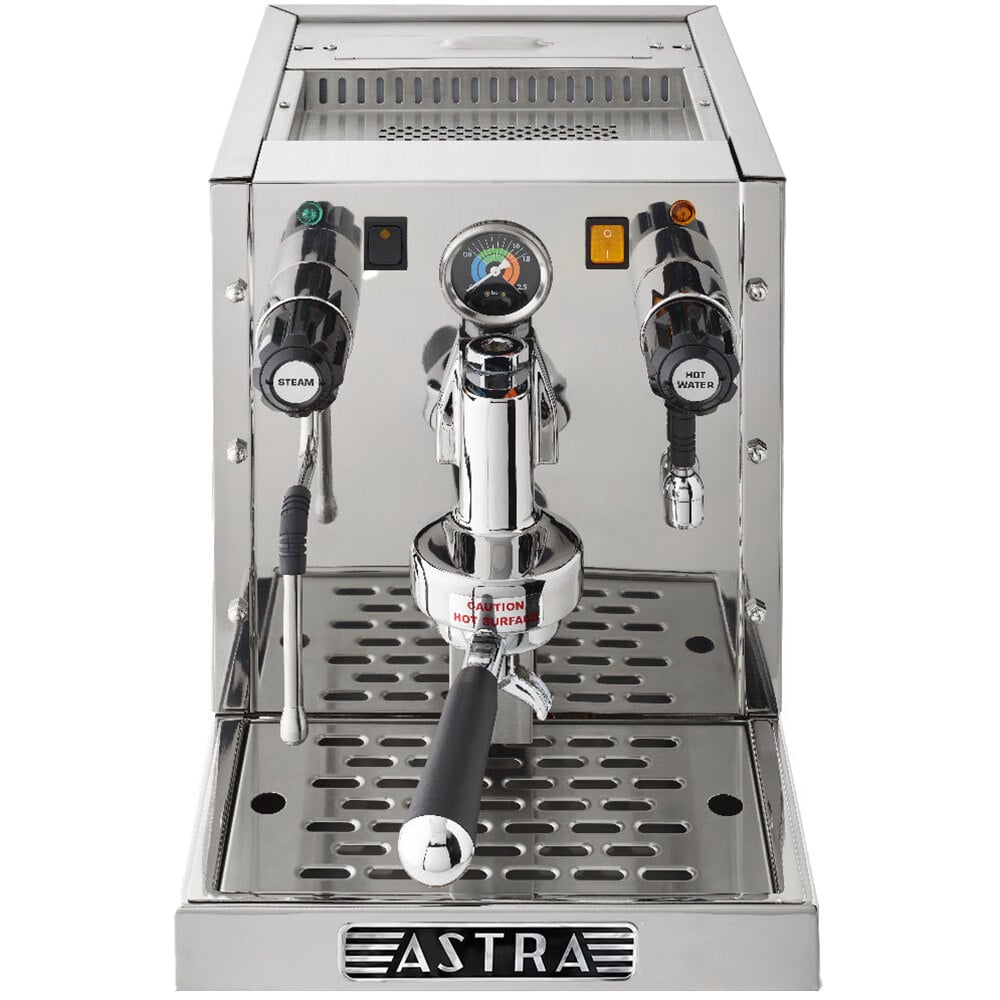
Semi-Automatic Espresso Machine
Semi-automatic espresso machines are the most popular espresso machine type in specialty coffee shops because of the full control it gives baristas over the brewing variables. These units have a pump that drives the water through the grouphead, but an experienced barista is still needed to grind the coffee beans, tamp the grounds, control the extraction time, and steam the milk. The authenticity of the process often achieves the highest-quality flavor.
Output: 180 to 720 cups per hour
Best for: coffee shops, cafes, and any other establishment where espresso-based drinks are the main menu item
- Provides complete control over the grind size, dose, tamp, and extraction time
- Most affordable option
- Often include a steam wand and a hot water valve
- More labor is involved in the brewing process, so it requires trained baristas
- Must stay at the machine to pull the espresso shot
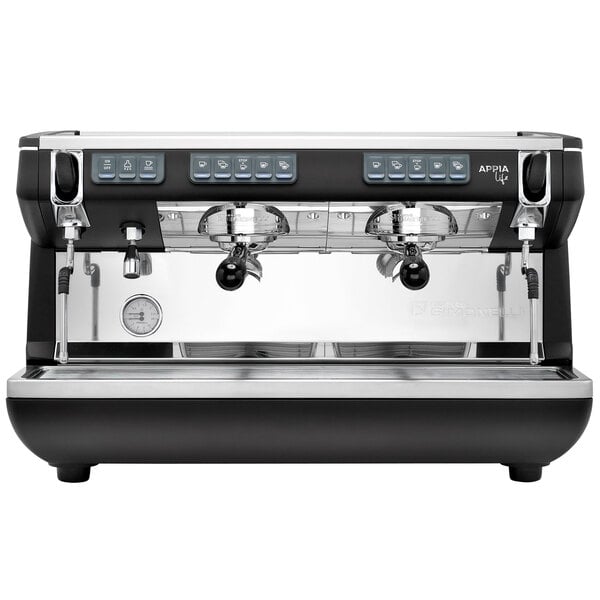
Automatic Espresso Machine
Automatic espresso machines also have a pump that drives the water through the grouphead, but they go a step further than semi-automatic machines in that the machine also automates the extraction time. This means that a barista only needs to press the button to brew and the unit will control how long the shot pulls for either volumetrically or via an internal timer. These systems do not automatically grind, dose, and tamp the coffee, but some do include a pre-infusion feature to optimize tamping.
Output: 32 to 720 cups per hour
Best for: coffee shops, cafes, bakeries, and restaurants
- Helps reduce human error by providing a consistent brew
- Allows baristas to step away from the unit after initiating the brewing process
- Feature easy-to-use push controls; Some have a pre-infusion feature to optimize tamping
- Some have a pre-infusion feature to optimize tamping
- Some feature both volumetric and manual dosing for convenience
- Little to no control over the extraction time of your shot
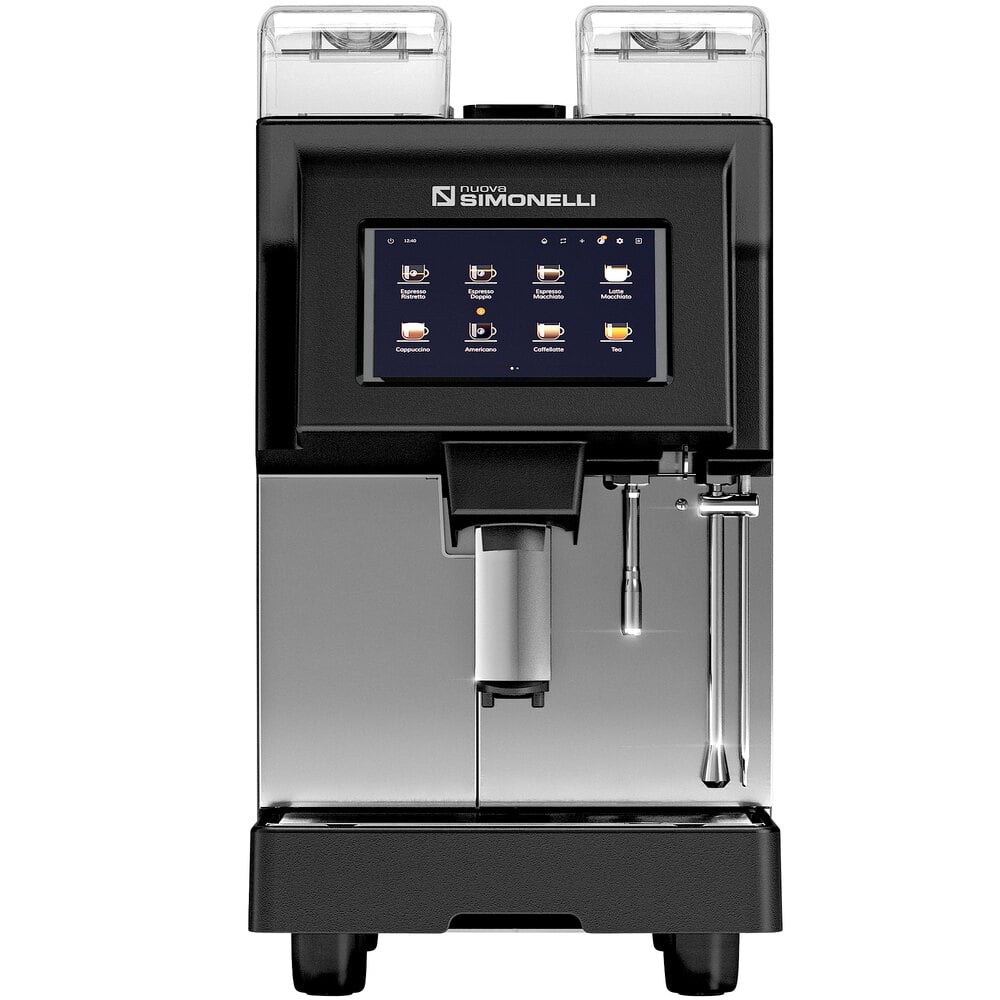
Super-Automatic Espresso Machine
Super automatic espresso machines are “bean-to-cup” machines, meaning they include a built-in grinder and auto-frothing programs to control the espresso production from start to finish via a 1-step or 2-step process. These labor-reducing machines feature intuitive controls and often come with programmable menu settings.
Output: 40 to 180 cups per hour
Best for: high-volume coffee shops, cafes, kiosks, and restaurants
- Promotes consistency in dosing and flavor with drinks
- Feature built-in coffee grinders to roast the coffee beans of your choice
- Feature easy-to-operate technology
- Great for high-volume coffee shops
- Many feature menu customization settings to create specialty drinks with the push of a button
- Little to no control over the brewing process
- Most expensive option
Direct Connect vs Pourover Espresso Machines
In addition to choosing the type of espresso machine, you will also need to choose your machine's water source: direct connect or pourover.
Direct Connect Espresso Machine
Direct connect espresso machines have a dedicated water line, so they have a constant water supply. Since plumbing is involved, these units will require professional installation.
- Constant water supply means there is no water tank that needs to be refilled
- Ideal for high-volume demand
- Needs to be set up near a water line connection
- Requires professional installation, which can be costly
Pourover Espresso Machine
Pourover espresso machines have a water reservoir that staff will need to fill when water levels are low. These units do not require any costly plumbing or professional installation.
- No installation required
- More compact and can be easily moved
- Ideal for establishments where espresso-based drinks is not the main menu item
- The water reservoir needs to be refilled regularly
- Typically need to be descaled more often
- Will not be able to handle high demand
Parts of an Espresso Machine
To use an espresso machine properly, it is important to know all the working parts. Our diagram below will breakdown the anatomy of an espresso machine, where the different parts can be found on a unit, and what their purpose serves for making espresso.
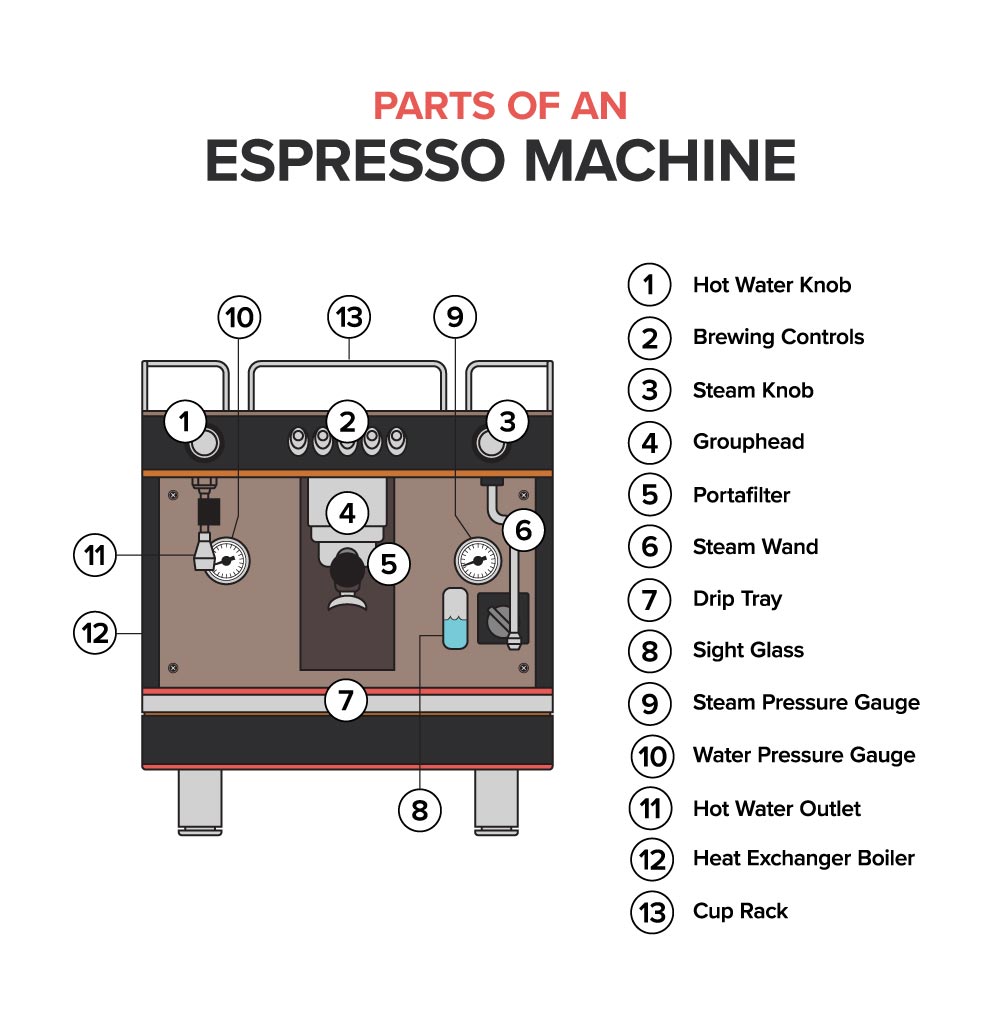
- Hot Water Knob: Use the hot water knob to activate the hot water outlet to dispense hot water.
- Brewing Controls: Found on automatic and super-automatic espresso machines, brewing controls are pre-programmed to pull the perfect shot of espresso.
- Steam Knob: Use the steam knob to activate the steam wand to dispense steamed milk.
- Grouphead: The grouphead dispenses water from the machine and into the portafilter basket.
- Portafilter: The portafilter is a metal filter basket that holds the ground and compressed coffee to be brewed. It features a handle that allows the user to secure the filter to the grouphead.
- Steam Wand: A steam wand is used to produce steamed milk for adding milk foam to beverages and creating latte art.
- Drip Tray: The drip tray provides a place to put your cup under the portafilter before brewing. It has grates to catch water, steamed milk, and coffee grounds and is removable for easy cleaning.
- Sight Glass: Found on the front side of the espresso machine, the sight glass shows the water level in the boiler.
- Steam Pressure Gauge: Located on the front side of the machine, the steam pressure gauge monitors both the boiler and pump pressure to indicate to users when the unit is working properly and when there is an issue.
- Water Pressure Gauge: Located on the front side of the machine, the water pressure gauge monitors both the boiler and pump pressure. It can indicate if there needs to be adjustments made to the grind size, dosage, or pressure while brewing as well as if the unit needs a pump replacement.
- Hot Water Outlet: The hot water will dispense from the hot water outlet.
- Heat Exchanger Boiler: The boiler heats and holds the water coming from the pump. The heat exchanger ensures there is water to dispense at two temperatures, allowing you to pull shots and steam milk with the same unit.
- Cup Rack: Holds clean, ready-to-use cups and mugs on the cup rack to streamline the drink-making process.
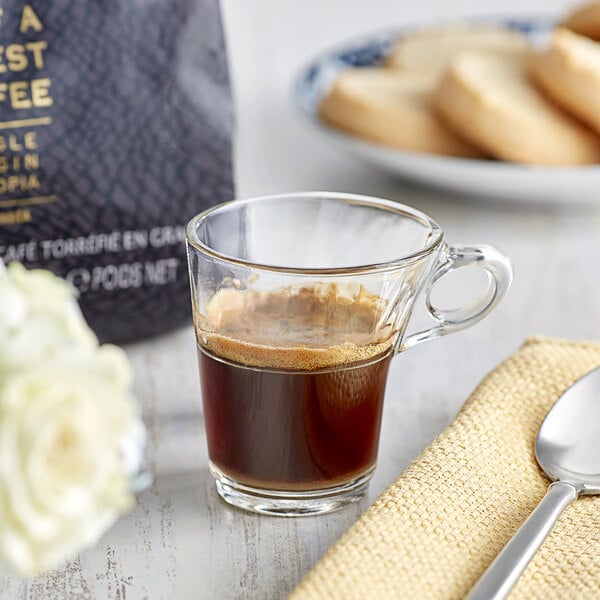
What Coffee Do You Use For An Espresso Machine?
Dark roasts are the best coffee beans to use for espresso. They have a full-bodied, rich taste and bold aroma that pairs better with milk than lighter roasts. Plus, dark roasts have a higher content of natural oils, which helps produce crema, the creamy top layer on espresso that gives it a fuller, fresher taste.
Some coffee bean manufacturers sell espresso beans or blends that are roasted and ground specifically with making espresso in mind. However, all coffee beans can be used to make espresso, and espresso beans and espresso blends can be used to brew coffee.
Espresso Making Accessories
In addition to choosing the best espresso maker, ensure you have all the equipment and accessories you need to craft specialty coffee drinks!
- Coffee Bean Grinder: If your unit does not come with a grinder, investing in a coffee bean grinder to grind beans to your desired grind size just before brewing ensures your prepared drinks will taste as fresh as possible.
- Coffee Bean Roaster: A commercial coffee roaster machine allows you to roast coffee beans to the precise roast darkness of your choice to customize your drink menu. By bringing coffee roasting in-house, you are able to have more control over the coffee you sell and ensure superior, fresh products.
- Milk Frothers and Steamers: If your unit does not come with a frothing wand, investing in a milk steamer to make foamed milk for latte art can help enhance the perceived value of your coffee drinks.
- Portafilter: Most often included with a unit, a portafilter is a handle that features a filter basket where you place your ground espresso beans. This is also where the water from the group head runs through.
- Frothing Pitcher: Frothing pitchers are ideal vessels for steaming and frothing milk or cream. They feature an angled handle and smooth-rimmed spout for precise pouring when creating latte art.
- Frothing Thermometer: Using a frothing thermometer will help you monitor the temperature of the milk to prevent you from over-steaming and curdling it.
- Espresso Knock Box: Use a knock box to collect used espresso grounds from the portafilter. They feature a knock bar that provides the perfect surface for "knocking out" spent coffee.
- Espresso Tamper: Espresso tampers are a handy tool for flattening and leveling the espresso grounds in your portafilter.
- Water Appliance Connector: A water supply connector guarantees your direct connect espresso machine is properly connected to your water line.
- Water Filtration System: Water filtration systems block contaminants to help keep your beverages tasting great. They help prevent scale, sediment, cysts, and other contaminants from clogging the internal components of your direct connect espresso machine to extend the life of your unit.
- Espresso Machine Cleaner: It is important to use commercial espresso machine cleaners to eliminate buildup in your unit. Daily and weekly cleaning of the parts are essential for performance, and your unit should be descaled every 3 to 6 months, depending on the quality of your water.
- Espresso Cleaning Brush: Espresso cleaning brushes feature tightly wound yet gentle bristles remove residue sitting in hard-to-reach places on the grouphead that would otherwise affect the taste of your espresso.
Commercial Espresso Machine Brands
We have a wide selection of commercial espresso machines from different brands to ensure you can find the best unit for your menu and price point. Be sure to check out our commercial espresso machine reviews as well!
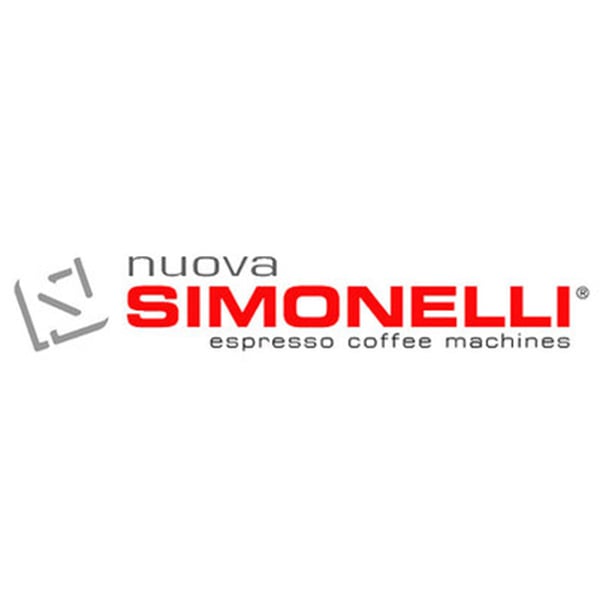
Nuova Simonelli
The Italian-based company Nuova Simonelli focuses on producing premium espresso machines and grinders.
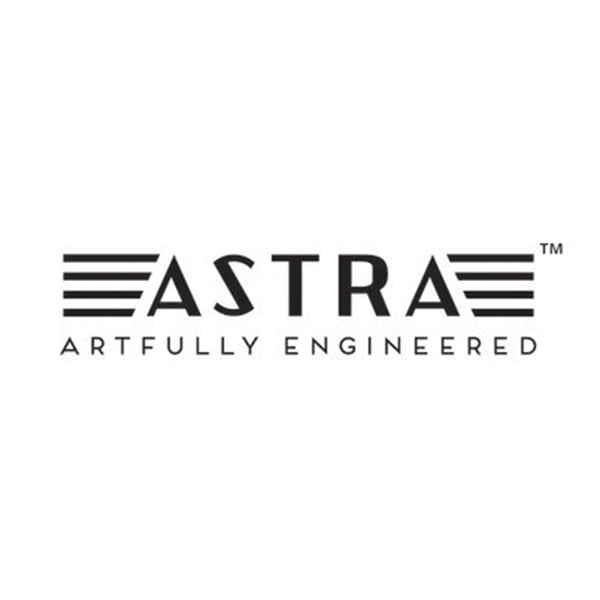
Astra
Manufactured in the U.S., Astra espresso machines are reliable and stand up to heavy-duty use.
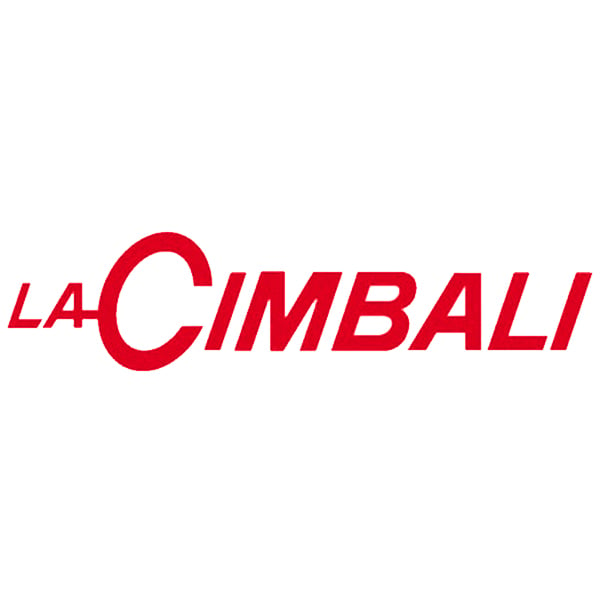
LaCimbali
With over 100 years of fine Italian craftsmanship, LaCimbali creates top-of-the-line coffee and espresso machines.
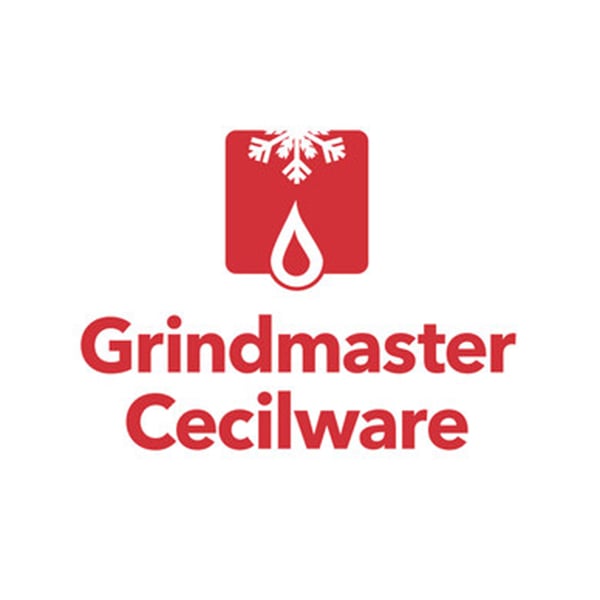
Grindmaster
Check out Grindmaster-Cecilware for easy-to-operate automatic and super-automatic espresso machines.
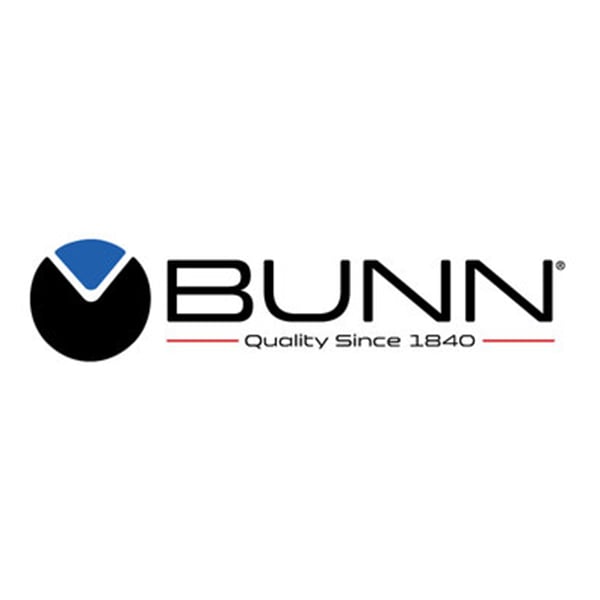
Bunn
For bean-to-cup convenience, Bunn espresso machines feature intuitive controls for easy operation.
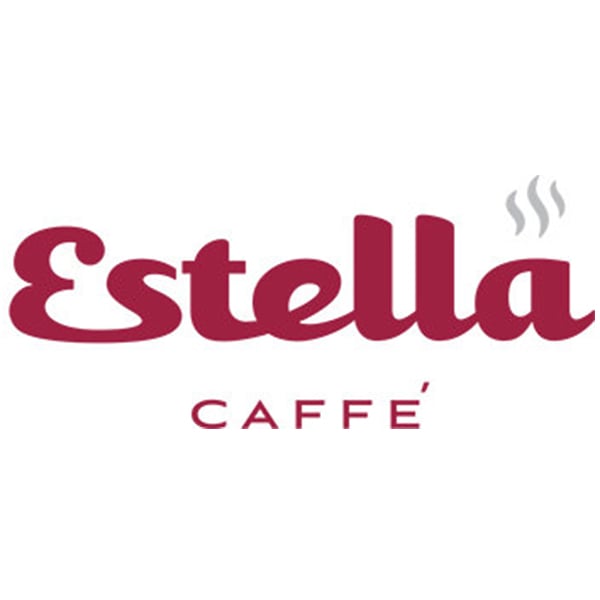
Estella Caffe
Combining user-friendliness and durability with affordability, Estella Caffe espresso machines are reliable.
Related Resources

Types of Coffee Makers
Coffee's global popularity makes it a great item to bring onto your menu to expand your offerings or provide as an amenity at your office to boost the employee or guest experience. This guide will go over the types of coffee brewers and their pros and cons, so you can choose the best coffee maker for your needs. Be sure to check out our commercial coffee machine reviews as well!
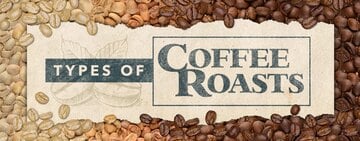
Types of Coffee Roasts
If you operate a cafe, you'll know that having a well-rounded coffee drink menu is essential to the success of your business. With over 54% of Americans over the age of 18 drinking at least one cup every day, the quality and roast color of your coffee and espresso beans can mean the difference between a great cup of coffee and a disappointment for your customers. Familiarize yourself with the different types of coffee roasts so you can make the best supply choices for your coffee shop or diversify your coffee roasting business offerings. Shop All Coffee Roasters

Coffee Pairings
Coffee is one of the world's most popular beverages, and many Americans consume it every day. When paired correctly, coffee and food can create a harmonious balance that brings out the best in each item. With so many new coffee trends popping up, coffee food pairings have grown to encompass a variety of different flavors and foods. Whether you're just starting a coffee shop or are looking to improve your restaurant's coffee service , understanding what food pairs well with your coffee beverages is a great way to boost sales and increase your bottom line. Shop All Coffee Products Coffee Pairing Considerations There are several factors you should consider when trying to find the perfect pairing for your coffee products. Depending on the roast
- Topics 1344
- Industrial 55
- Troubleshooting Guides 21
- Restaurant Management 128
- Bar Management 55
- Catering Tips 35
- Bakery Management 41
- Food Trucks & Concessions 49
- Advertising & Marketing 37
- Eco-Friendly Tips 11
- Facility Layout & Design 41
- Coffee Shop Tips 27
- Installation & Maintenance 51
- Janitorial & Pest Control 30
- Safety & Sanitation 88
- Startup Tips 104
- Menu Design 10
- Kitchen & Cooking Tips 81
- Hospitality Management 23
- Pizza & Sandwich Shop Tips 36
- Smallwares 37
- Food Prep 88
- Tabletop Items 17
- Disposables 22
- Calculators & Tools 6
- Consumables 52
- Warewashing & Laundry 18
- Cooking Equipment 90
- Food Storage & Refrigeration 51
- Beverage Equipment 34
- Office Supplies 6
- Resource Type
- In-Depth Articles272
- Buying Guides296
- How-Tos93
- Product Reviews77


